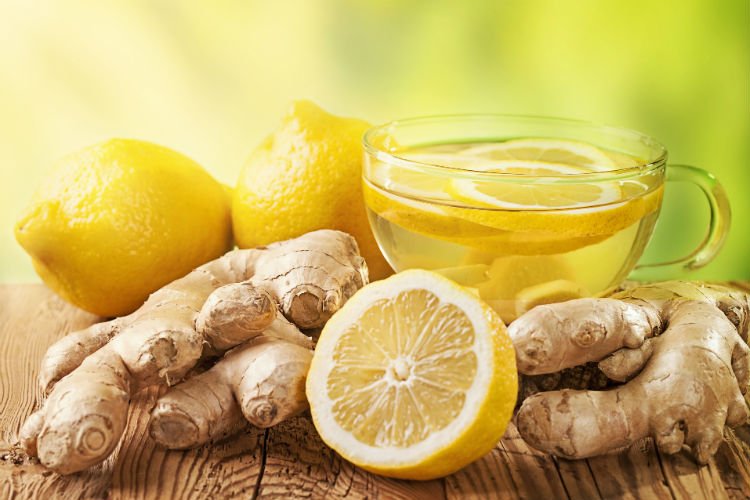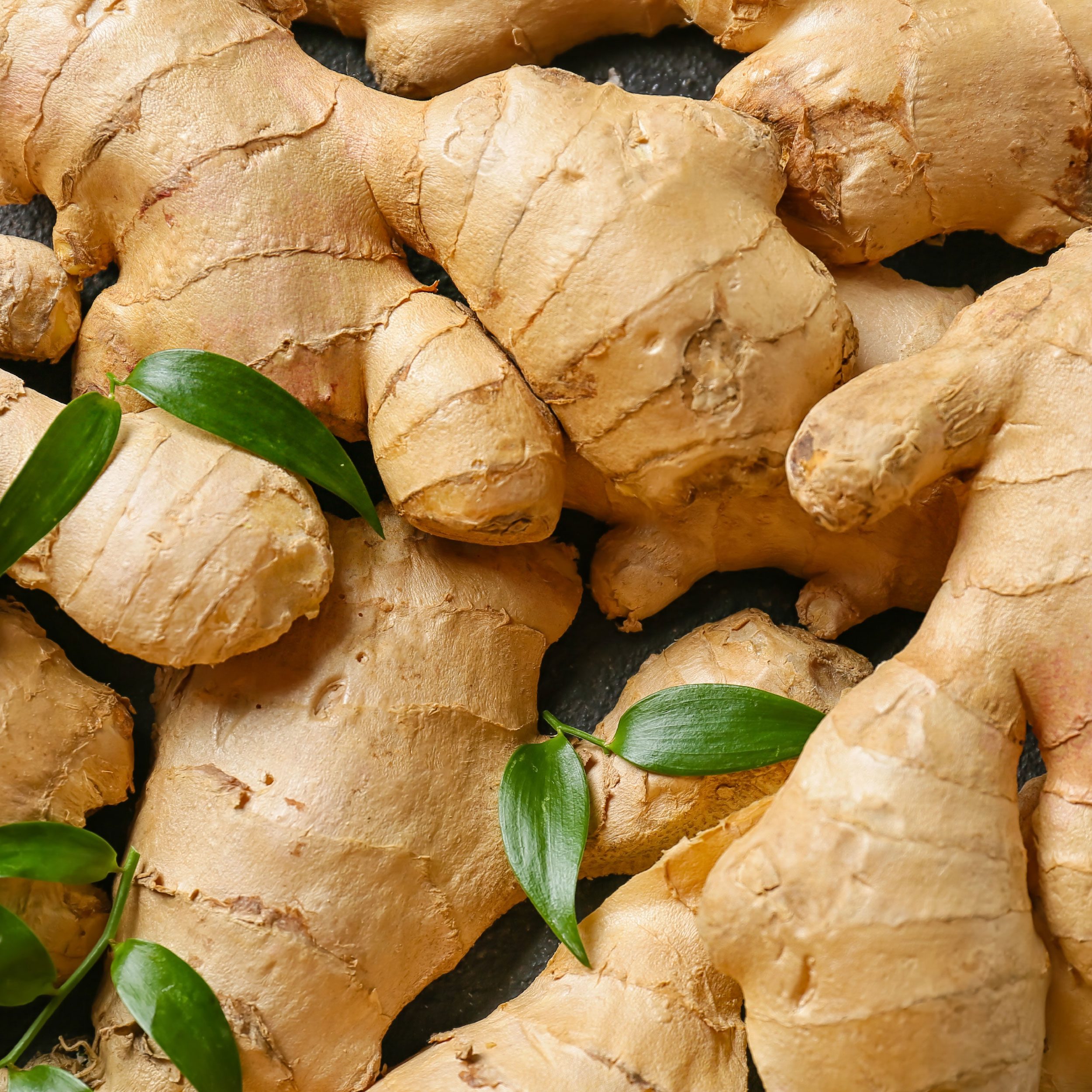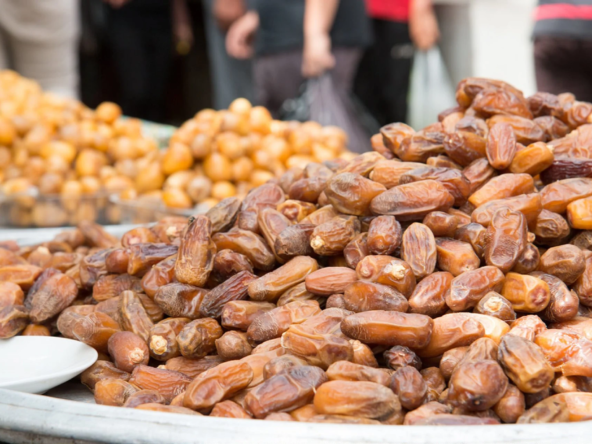Ginger, with its pungent aroma and zesty flavor, has been a cornerstone of culinary traditions across the globe for thousands of years. This knobby root, known scientifically as Zingiber officinale, not only enriches dishes with its distinctive taste but also boasts an impressive array of health benefits. From savory main courses to refreshing beverages, ginger’s versatility in the kitchen is truly remarkable. In this blog post, we’ll explore the many culinary uses of ginger, offering recipes and tips to help you incorporate this dynamic ingredient into your own cooking repertoire.
A Brief History of Ginger in Cuisine
Ginger’s journey from wild tropical forests to our kitchens is a tale of exploration and trade. Native to Southeast Asia, ginger was one of the first spices to be exported from Asia, arriving in Europe as early as the first century AD. It was prized not only for its flavor but also for its medicinal properties. The ancient Greeks and Romans used ginger in their cooking, while in medieval Europe, it became a symbol of wealth and used in various sweet and savory dishes. Today, ginger is a staple in many culinary traditions, from Asian stir-fries and Indian curries to Western baked goods and beverages.
Fresh vs. Dried Ginger: Different Forms, Different Uses
Ginger comes in various forms, each with its own unique characteristics and culinary applications.
- Fresh Ginger: Fresh ginger root is often the go-to form for many recipes, offering a vibrant, citrusy, and slightly spicy flavor. It’s typically peeled and grated, minced, or sliced before being added to dishes.
- Dried Ginger: Ground dried ginger has a more concentrated, warm, and slightly sweet flavor compared to its fresh counterpart. It’s commonly used in baking and spice blends.
- Pickled Ginger: Known as gari in Japanese cuisine, pickled ginger is sweet and tangy, often served with sushi to cleanse the palate.
- Candied Ginger: This is fresh ginger that has been cooked in sugar syrup and dried. It’s chewy, sweet, and spicy, perfect for snacking or adding to desserts.
- Ginger Paste: Made from fresh ginger, this convenient option saves time in the kitchen and can be used similarly to fresh ginger.
Savory Dishes with Ginger
Asian-Inspired Dishes
Stir-Fries: Fresh ginger is a staple in many Asian stir-fries. Its sharp, spicy notes add depth to the dish and balance other flavors. To make a quick and delicious stir-fry, start by heating oil in a wok, then add thinly sliced ginger and garlic. Toss in your choice of vegetables and protein, such as chicken or tofu, and stir-fry with soy sauce and a touch of sesame oil.
Curries: In Indian cuisine, ginger is often paired with garlic in a paste that forms the base of many curries. For a simple ginger chicken curry, sauté ginger-garlic paste with onions, add spices like turmeric, cumin, and coriander, and simmer with chicken pieces and tomatoes. Finish with a splash of coconut milk for a creamy texture.
Soups: Ginger adds warmth and complexity to soups. A classic example is the Thai Tom Yum soup, where fresh ginger (or galangal, a close relative) is simmered with lemongrass, kaffir lime leaves, and chilies to create a fragrant broth. Add shrimp, mushrooms, and tomatoes, and garnish with fresh cilantro and lime juice for a refreshing and spicy soup.
Western Dishes
Marinades and Rubs: Ginger is excellent in marinades and rubs for meat and fish. Its enzymes help tenderize the meat while infusing it with flavor. A simple ginger marinade might include soy sauce, honey, garlic, and grated ginger. Marinate beef, chicken, or fish for at least an hour before grilling or roasting.
Salad Dressings: Grated fresh ginger can brighten up a salad dressing. Combine ginger with soy sauce, rice vinegar, sesame oil, and a bit of honey for a flavorful Asian-inspired dressing. Drizzle over mixed greens, shredded carrots, and sliced cucumbers for a light and refreshing salad.
Sweet Treats and Baked Goods
Ginger’s warm and spicy flavor makes it a popular ingredient in sweet dishes, particularly during the fall and winter months.
Gingerbread: Perhaps the most famous ginger-flavored dessert is gingerbread. The combination of ground ginger, cinnamon, cloves, and molasses creates a rich and spicy cake or cookie that’s perfect for holiday celebrations. Try making gingerbread cookies and decorating them with icing for a festive treat.
Cakes and Muffins: Fresh or ground ginger can add a delightful zing to cakes and muffins. A classic example is the gingerbread cake, which is moist and richly spiced. For a twist, try adding crystallized ginger pieces to your favorite muffin recipe for a sweet and spicy surprise.
Pies and Tarts: Ginger pairs beautifully with fruits like pears, apples, and pumpkins. Add ground ginger to the filling of an apple pie for an extra layer of warmth and spice. Ginger can also elevate a simple pumpkin pie to new heights.
Cookies: Ginger snaps are a beloved cookie that combines the sharpness of ginger with the sweetness of sugar and the warmth of spices. They’re crispy, chewy, and perfect with a cup of tea or coffee.
Candies and Snacks: Candied ginger makes for a delightful treat on its own or dipped in dark chocolate. It can also be chopped and added to granola, trail mix, or even sprinkled on top of yogurt.

Beverages with Ginger
Ginger’s invigorating flavor also makes it a fantastic addition to beverages, both hot and cold.
Tea: Ginger tea is a soothing and warming drink, perfect for cold days or when you’re feeling under the weather. Simply steep fresh ginger slices in boiling water, add honey and lemon to taste, and enjoy. For a more robust flavor, try making a spiced chai with ginger, cinnamon, cloves, and cardamom.
Juices and Smoothies: Fresh ginger adds a zingy freshness to juices and smoothies. Blend ginger with carrots, apples, and a touch of lemon for a revitalizing juice. In smoothies, ginger pairs well with tropical fruits like mango and pineapple.
Cocktails: Ginger is a popular ingredient in cocktails, offering a spicy kick that balances sweetness. The classic Moscow Mule combines vodka, ginger beer, and lime for a refreshing drink. For a non-alcoholic option, try making a ginger lemonade by mixing ginger syrup with fresh lemon juice and sparkling water.
Health Tonics: Ginger is often used in health tonics for its medicinal properties. A simple ginger shot, made by juicing fresh ginger and adding a splash of lemon juice, can boost your immune system and aid digestion.
Preserving Ginger
Ginger can be preserved in several ways to ensure you always have it on hand.
Freezing: Fresh ginger can be peeled, sliced, and frozen for later use. This method retains the flavor and makes it easy to grate or chop straight from the freezer.
Drying: Slices of ginger can be dried and ground into powder, which is convenient for baking and spice blends.
Pickling: Pickled ginger is a great condiment for sushi, salads, and sandwiches. To make pickled ginger, slice fresh ginger thinly and marinate it in a mixture of rice vinegar, sugar, and salt.
Ginger in Fusion Cuisine
Ginger’s versatility allows it to cross cultural boundaries and appear in fusion cuisine, where different culinary traditions blend harmoniously.
Ginger-Lime Shrimp Tacos: Combine the zestiness of ginger with the tang of lime in a marinade for shrimp. Grill the shrimp and serve in tortillas with a slaw made from cabbage, carrots, and a ginger-lime dressing.
Ginger Teriyaki Glazed Salmon: Create a glaze with soy sauce, ginger, garlic, and honey, and brush it over salmon fillets. Bake or grill until the salmon is cooked through and the glaze is caramelized and delicious.
Spicy Ginger and Turmeric Rice: Infuse your rice with the flavors of ginger and turmeric for a vibrant and aromatic side dish. Sauté ginger and garlic in oil, add turmeric and rice, and cook with broth for a flavorful twist on a staple.
Tips for Cooking with Ginger
- Peeling: Use a spoon to peel fresh ginger. This method helps remove the skin without wasting too much of the root.
- Grating: For a fine texture, use a microplane grater. For a chunkier texture, use a box grater or chop finely with a knife.
- Balancing Flavors: Ginger can be quite potent. Start with a small amount and adjust to taste, balancing with other ingredients like garlic, chili, and citrus.
- Storage: Store fresh ginger in the refrigerator, wrapped in a paper towel and placed in a plastic bag. Alternatively, freeze ginger to prolong its shelf life.
- Combining with Other Spices: Ginger pairs well with a variety of spices such as cinnamon, cloves, cardamom, and cumin. Experiment to find your favorite combinations.
Conclusion
Ginger’s multifaceted flavor profile and health benefits make it a valuable ingredient in any kitchen. Whether you’re preparing a hearty curry, baking a batch of spicy cookies, or mixing a refreshing drink, ginger can enhance your culinary creations in countless ways. Embrace the versatility of this remarkable root and let it inspire you to experiment and innovate in your cooking. With ginger, the possibilities are truly endless.
Ajigofarms is a reliable global agricultural purchase sourcing with profound expertise in the manufacturing, and exportation of food crops. We are tested, and trusted suppliers of all kinds of cash crops and food crops. Our constant supply chain solution makes exporting easy, quick, and safe, we are identified with timeliness and meeting up with deadlines. Regardless of the region you are located in worldwide, you can reliably order your Agric products and be rest assured of successful delivery.




